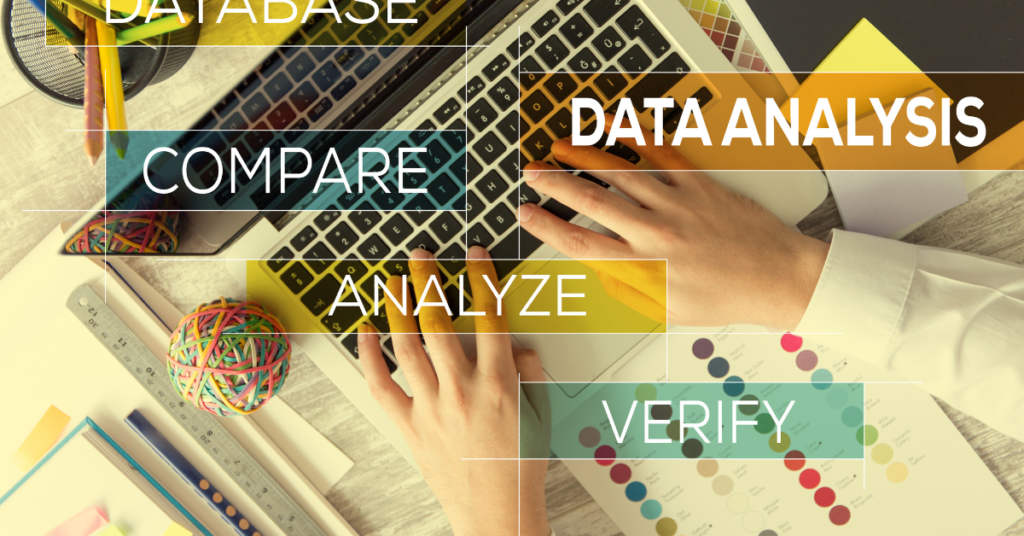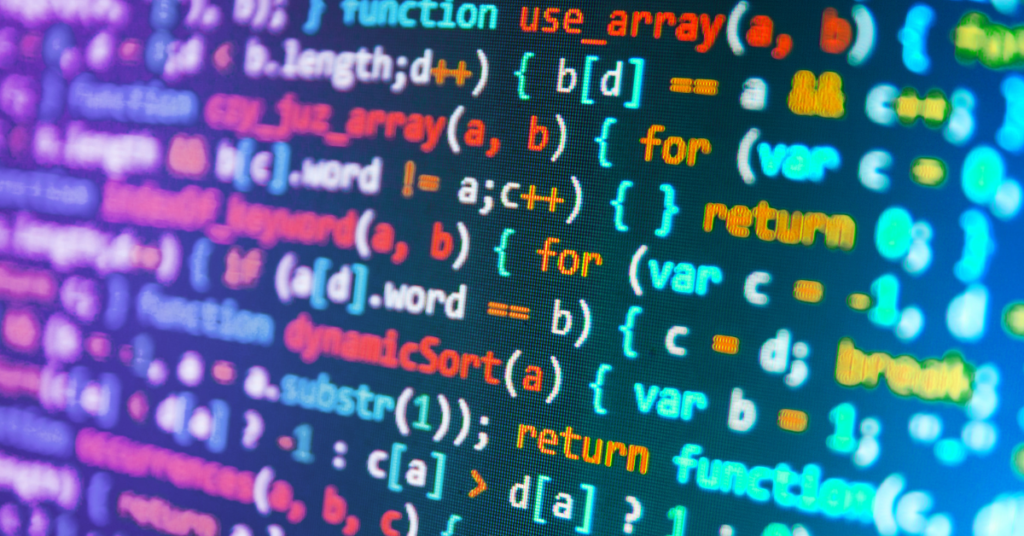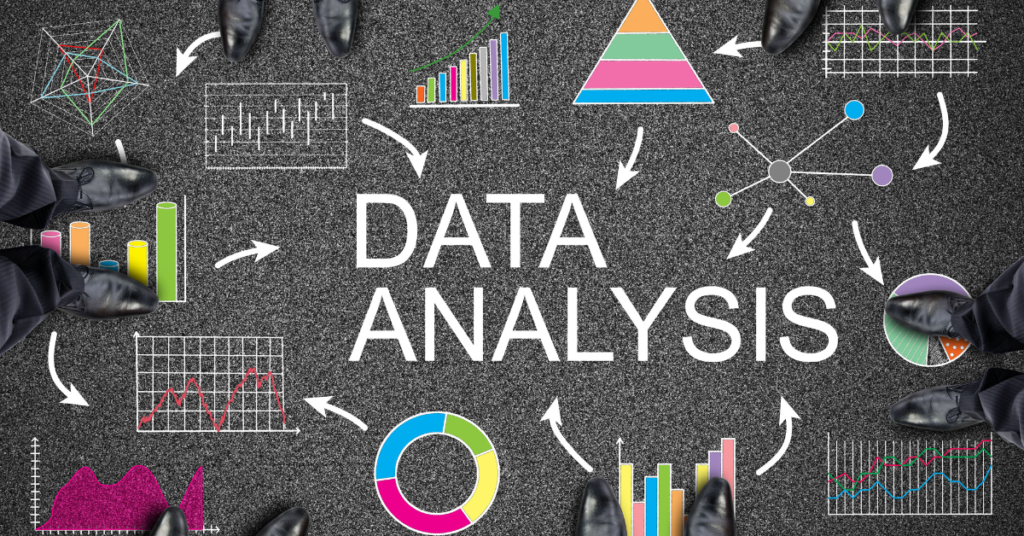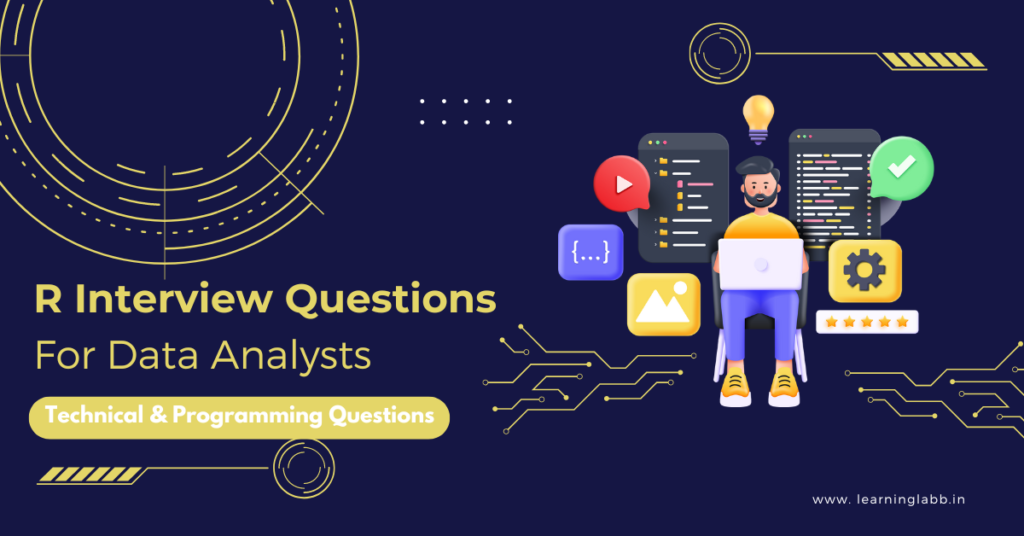R Interview Questions For Data Analyst: If you’re preparing for a data analyst role and know that R will be a part of the interview, it’s important to train yourself with the types of questions you might face. As the demand for data analysts continues to rise, so does the need for proficiency in various programming languages, especially R.
This article contains the following:
- R interview questions for data analyst
- R technical interview questions data analyst
- Common R interview questions data analyst
- R programming interview questions for data analyst
R Interview Questions For Data Analyst
It’s a given that when preparing for a data analyst interview, one must understand the kinds of questions that focus on R. These questions test your proficiency in using R for data analysis, your understanding of its functions, and how well you can apply this knowledge in real-world scenarios.
1. What is R and why is it used in data analysis?
R is a programming language and environment used for statistical computing and graphics. It’s widely used in data analysis due to its extensive libraries and tools for data manipulation, calculation, and graphical display.
2. How do you handle missing values in a dataset using R?
You can use functions like na.omit() to remove rows with missing values or is.na() combined with mutate() to replace missing values.
3. Explain the difference between apply(), lapply(), and sapply() functions.
apply(): Used to apply a function to rows or columns of a matrix or data frame.
lapply(): Applies a function to each element of a list and returns a list.
sapply(): Similar to lapply(), but tries to simplify the result into an array or matrix.

R Technical Interview Questions Data Analyst
Technical questions that come up in a data analyst interview are designed to assess your deep understanding of R’s functionalities and your ability to solve complex problems, here are some technical R interview questions for data analyst roles:
1. How do you merge two data frames in R?
You can use the merge() function or dplyr package’s inner_join(), left_join(), right_join(), and full_join() functions.
2. What are some common data structures in R?
Vectors, Lists, Matrices, Data Frames, and Factors.
3. Describe the use of the ggplot2 package.
ggplot2 is a data visualization package in R used to create complex and multi-layered graphics using a grammar of graphics (wide range of graphics).
4. How do you perform linear regression in R?
You can use the lm() function to fit a linear model, specifying the formula and data as arguments.
Common R Interview Questions Data Analyst
Some questions are frequently asked in data analyst interviews. They are mainly aimed at assessing your overall familiarity with R. Below are some common R interview questions for data analysts:
1. What are factors and how are they used in R?
Factors are used to represent categorical data and can be ordered or unordered. They are useful in statistical modeling.
2. How do you install and load a package in R?
Use install.packages(“package_name”) to install and library(package_name) to load the package.
3. What is the function of the summary() command in R?
summary() provides a summary of an object’s properties, like the structure of a data frame or the results of a statistical model.

R Programming Interview Questions For Data Analyst
The p Programming questions focus on your coding skills and ability to write efficient and effective R code. Below are some R programming interview questions for data analyst positions:
1. Write a function to calculate the mean of a numeric vector in R.
R
Copy code
calculate_mean <- function(x) {
return(mean(x))
}
2. How would you subset a data frame in R?
You can subset a data frame using indexing, the subset() function, or the dplyr package’s filter() function.
3. Explain the apply() family of functions with an example.
The apply() family includes functions like apply(), lapply(), sapply(), vapply(), and tapply(), each used for applying functions to data structures. Example:
R
Copy code
data <- matrix(1:9, nrow = 3)
apply(data, 1, sum) # Sums each row
4. How do you handle large datasets in R?
Useforeach andfor efficient data manipulation, parallel processing with packages like parallel or foreach, and consider memory management techniques like chunking.
Here are a few more samples:
Writing Functions:
- How do you write a custom function in R?: Provide a syntax example.
- Explain the concept of scope in R functions: Discuss local and global variables.
Control Structures:
- How do you write an if-else statement in R?: Provide a syntax example.
- Explain the use of loops in R: Discuss for, while, and repeat loops.
Data Manipulation and Analysis:
- Write a function to calculate the factorial of a number in R: Provide a code example.
- How do you perform a t-test in R?: Use the t.test() function.
Advanced Data Handling:
- How do you handle large datasets in R?: Discuss packages like data.table and techniques for memory management.
- Explain the concept of vectorization in R: Discuss how vectorized operations improve performance.

On A Final Note…
Mastering these R interview questions for data analysts can significantly boost your confidence and performance in job interviews. Whether you face R technical interview questions data analysts, common R interview questions data analysts, or R programming interview questions data analysts, being well-prepared is the key to success.
Practice, practice again and practice more until you are 100% sure of your R expertise.
For more guidance, reach out to us at Ze Learning Labb.





